On Saturday 13th of June 1987 two police constables attended 86 Illawarra Road, Marrickville. They noted a bulldozer on the site plus a group of workmen, a house with the roof removed and part of the upper storey missing.
They had been alerted to the demolition in progress of ‘Brockleigh’, a grand 19th century mansion with a Section 130 order in place that prevented its demolition.
The owner, who was onsite, claimed no knowledge of the order but agreed to stop the demolition until he had spoken to his solicitor on Monday. However, when two constables returned to the site on Monday at 6am they found the house had been completely flattened.
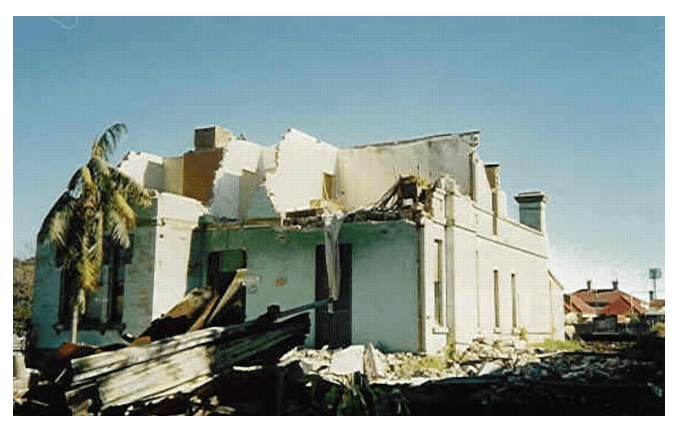
Photo: Inner West Council Library and History Services
The story of Brockleigh directly correlates with the story of Marrickville; the families who inhabited the house reflected Marrickville’s social history. Exploring the history of this house was like watching Marrickville’s march through time.
Brockleigh was built about 1884. It was a two-storey Victorian villa with expansive grounds, originally of one and a half acres, that included a one-room cottage, stables and sheds. Downstairs was a grand entrance vestibule, formal lounge and dining rooms with marble fireplaces and a French window. A magnificent cedar staircase led to four large bedrooms upstairs. It had an 84-metre frontage to Illawarra Road and was built by George and Selina Hayward on land inherited by Selina after her parents died.
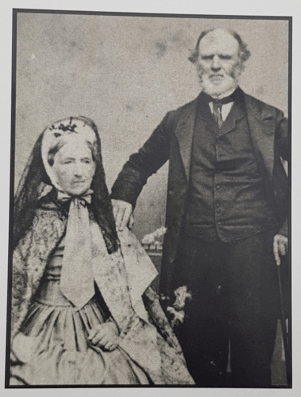
Image: William and Ann…a Lifetime Together by Cathy Hill.
Selina’s parents were William and Ann George. William had arrived aboard a whaling ship in 1822. Ann arrived in 1825 on the first ship into Sydney, comprised entirely of free settlers. It’s not known how they met but Ann had travelled to Australia on the ‘Hugh Crawford’ with merchant and pastoralist Richard Jones. The whaling ship that William arrived on was owned by Richard Jones, so that is a likely connection.
The two young immigrants met and married at Parramatta in 1826. After farming in Long Reef and the Newcastle area, William and Ann bought ‘Lot 22 of Section 3B of the Petersham Estate’ in 1853. This was a 12-acre block on the corner of Swamp Road (now Sydenham Road) and a reserved road (it was eventually named Illawarra Road).
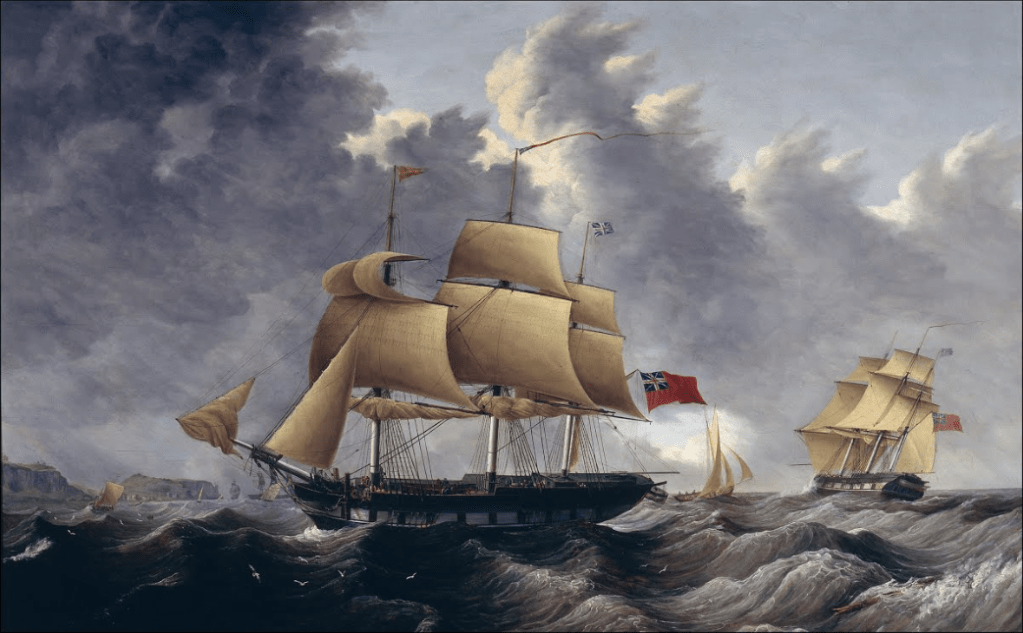
Australian National Maritime Museum./Wikipedia
The family moved there and began farming again, albeit on a much smaller scale with William describing himself as a gardener. They built a house at the northern side of the block and called it ‘Woodland Cottage’, in the vicinity of the street now known as Woodland Street.
William was particularly keen to secure the financial future of his three daughters and in 1858 he gave his eldest daughter Cecilia half an acre right on the corner of Swamp Road and Illawarra Road. Cecilia remained in Woodland Cottage, caring for her parents as they aged, but eventually built her own house called ‘Elms’ on that half-acre block. It is still there today, sitting at number 124 Illawarra Road. When William passed away in 1869, his daughters Georgina and Selina also inherited a half acre each, with the balance remaining with Ann.
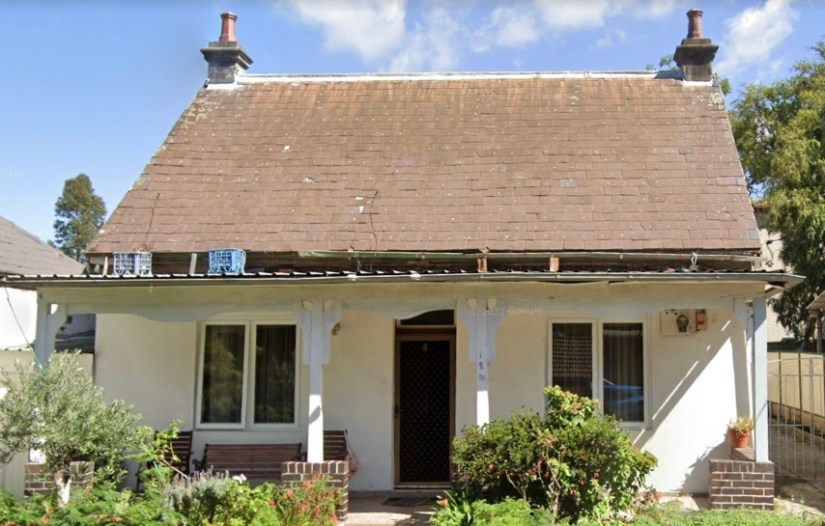
Image: Google Maps, Feb. 2021.
After Ann died in 1874, Selina and Georgina received another acre each and Cecilia received the three-acre block that Woodland Cottage was standing on. Two of the sons received half-acre blocks. It appears that William had intended to subdivide the land and after Ann died that is what happened. The rear of the block was sold to Isaac Doust who created ‘The Fairview Estate’ (Holmesdale Street) in 1877. Cecilia also sold him her three-acre block and he created Woodland Street the same year. Woodland Cottage was demolished in this process and Cecilia moved out.
Son Benit sold his block on the corner of Illawarra Road and Council Street and it became home to Marrickville’s first Town Hall. Son Alfred sold his block to his sister Selina, which allowed her to eventually create the very grand ‘Brockleigh Estate’.
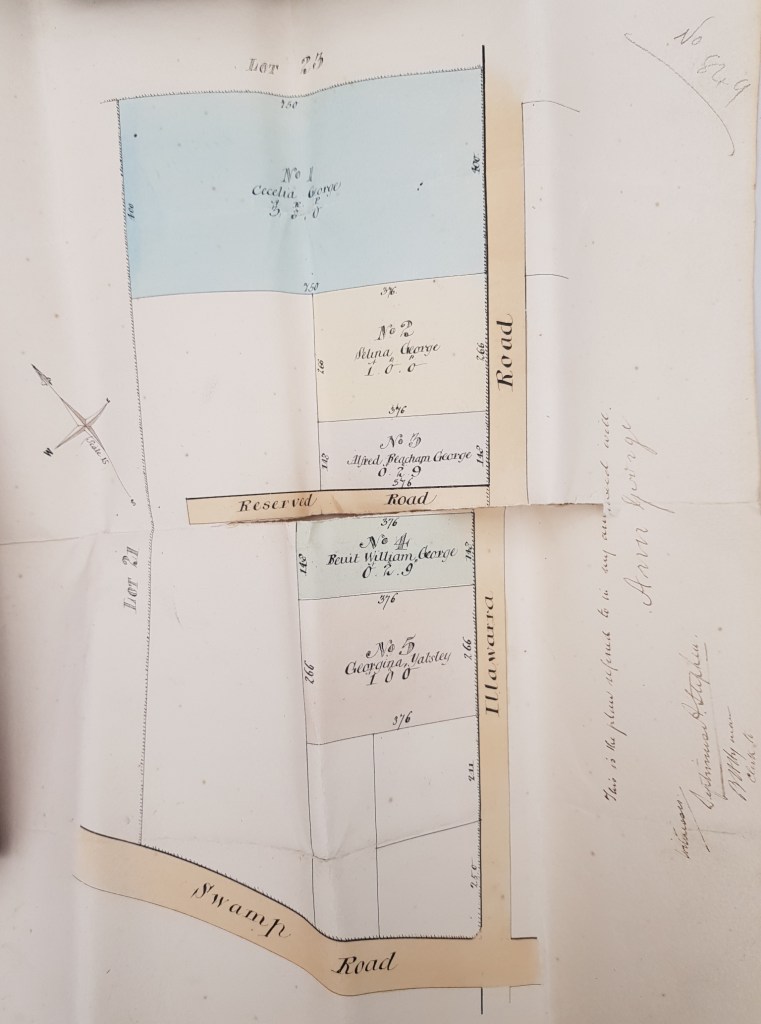
Map in Ann George’s will. State Archives of NSW.
In 1879 Selina married George Mark Hayward.
The Hayward family had emigrated from Devon in 1841 and settled at Bowenfels, along the route to Bathurst. They established a tannery with George working alongside his father. George married local girl Hannah Williams and they had five children together. George’s father died in 1873 and George left the tannery in 1875 to move his family 100 kilometres north to Rylstone. Within six months one of his sons died, and two days later Hannah followed.
Selina’s brother Benit had moved to Rylstone and probably met George there. Benit had decided to try farming on his own account, and George was running the local general store. No doubt it was Benit who introduced George to his sister Selina and they married in Sydney in 1879. Selina became an instant mother to four children under 12, and within two years had added another two to the family. The Haywards were travelling between Sydney and Rylstone as George had a thriving business in Rylstone, which he eventually left his sons to run. Amongst this busy life Brockleigh was built and became the family’s base.
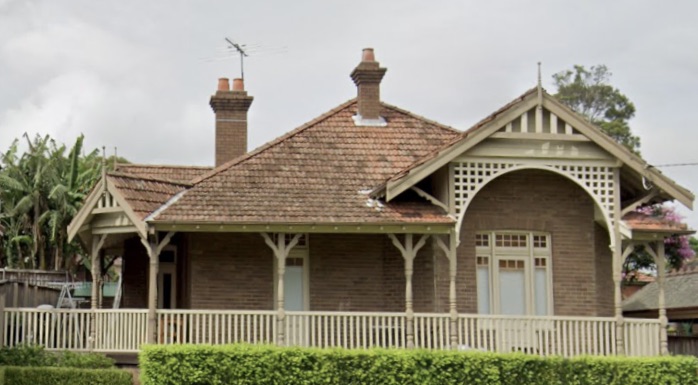
Image: Google Maps Feb 2022
In 1899, after 15 years of living at Brockleigh, George bought a block of land at Summer Hill and built a beautiful federation home called ‘Tiverton’. The Haywards left Marrickville and there is really no way of knowing why. Eldest daughter Mary was living there, following in Cecilia’s footsteps, caring for George and Selina as they aged. Son John would leave in 1903 to marry Amy Alderton, whose father Daniel was headmaster of Tempe Public School. Brockleigh was probably too large for the household now, and required too much maintenance for the ageing couple. The local brickworks may also have been a factor.
When the George family moved to their 12-acre block in 1853, they were surrounded by the 31 acres that John Beer had purchased. John was also farming, specialising in fruit trees, but had arrived at it from a vastly different trajectory.
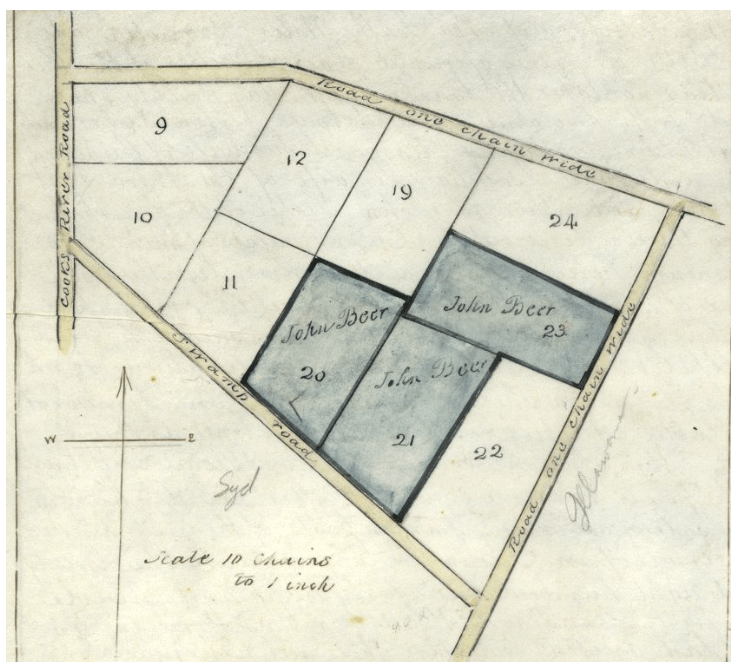
Map from Conveyancing Document Book 26 Number 48. NSW Land Registry Services.
https://www.nswlrs.com.au
Arriving in Sydney with his family in 1840, he had been working as a butler in London. In Sydney, he became a hairdresser at Brickfield Hill. The opening up of the ‘Petersham Estate’ brought many farming families to Marrickville. But when the neighbourhood became known as Marrickville in 1855, and then became a municipality in 1861, it was clear that the value was in the land.
While maintaining his orchards in the northern part of the property, John began to sell the rest of the land. In 1871 he sold three acres along Sydenham Road for 200 pounds to local brickmaker William Moseley. William was a small operator, digging until the clay was exhausted and going no further. He worked the clay until 1882 when he sold the land to Duncan Anderson who continued the brickmaking enterprise but rebadged it as the Standsure Brickworks.
Thomas Daley was given a five-year lease over the land and managed the brickworks. By 1886 the brickworks had been enlarged to seven acres and in 1890 a new kiln with a 140-foot chimney was built. Output grew to 100,000 bricks per week and the shale below the clay was being blasted with explosives. All of this was happening less than 200 metres from Brockleigh and the noise and smell must have been unbearable. The Haywards packed up and moved to a very quiet part of Summer Hill, where they spent the rest of their lives.

Image: Inner West Council Library and History Services
Brockleigh became a rental property from 1900, with its first tenants being Thomas and Violet Ashton. Thomas had a pottery business in Edinburgh Road and later, another one at the corner of Garden and Shirlow streets. Violet’s parents, Henry and Helena Dawson, moved into Brockleigh as well.
Henry had been the member of parliament for Monaro but had left politics and returned to legal practice in Sydney. His brother Peter was a founding partner of Blake Dawson Waldron. Henry’s ties to Marrickville were strong through his mother Margaret (nee Harnett). His uncles were Gerald Halligan (Marrickville’s first mayor, and chief clerk in the Department of Public Works, NSW) and Laurence Joseph Harnett (sergeant-at-arms in the Legislative Assembly and owner of the 30-acre ‘Harnleigh Estate’ on Warren Road).
Theodore Anthony Clark moved into Brockleigh in 1904. His brother Henry Marcus had emigrated to Australia in 1881 and soon after began the Marcus Clark department store chain. Theodore (or Tod as he was known) followed his brother to Sydney in 1885 and joined him as a clerk in the business. Tod became a director in 1902. In 1908 Tod was working in the iconic Marcus Clark building at the corner of George and Pitt Streets and three days before Christmas he went to work as usual. Just before 7pm he escorted two of the staff up to the third floor noting that the door of the lift was jamming and so he left the door slightly ajar on the ground floor. After dropping the ladies off, he walked back down the stairs and it is thought that he attempted to unjam the door. He was found just after 7pm in the base of the lift well with the lift door on top of him and massive head injuries. Tod died while being raised out of the lift well. He was 42 years old. His wife Elizabeth and their six children moved from Brockleigh soon after.
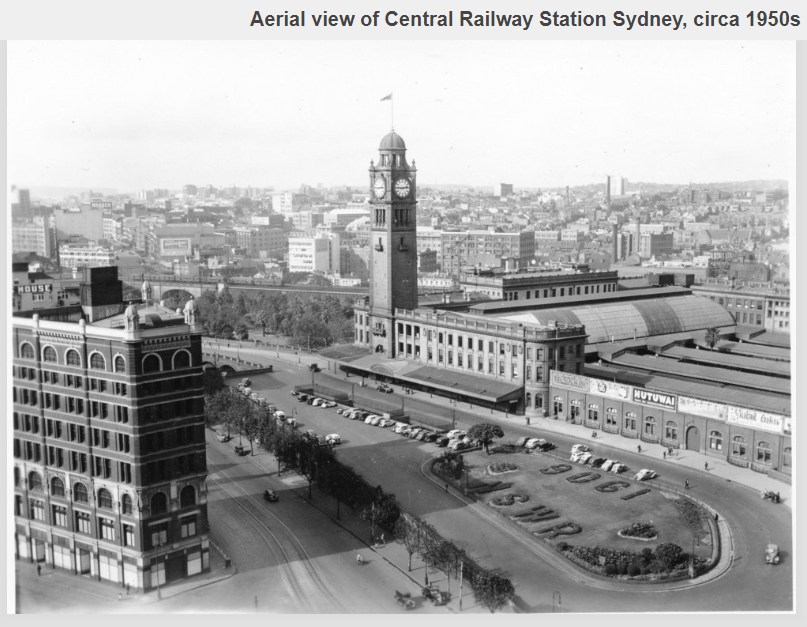
Photo: City of Sydney Archives & History Resources
Adelaide Bailey moved to Brockleigh in 1913. Her husband Charles was the grandson of John Beer through his mother Harriett. Charles’ career was remarkable, starting as an ironmonger and then becoming a dentist with a practice on Marrickville Road, and then Petersham Road. He died in 1904 and Adelaide maintained the dental licence until at least 1923, employing dentists to keep the practice going. War broke out in 1914 and her two sons enlisted in the Australian Army, as did her daughter Ethel who was a nurse. The house was now far too large and Adelaide started to take in boarders, finally subletting Brockleigh at the end of 1914 and relocating to Surry Hills.
By this stage, the large estates in Marrickville were in decline. Many had been subdivided, and the grand homes were being demolished. Brockleigh had escaped this fate … for now.
A series of people moved in and out of Brockleigh for the next 20 years, subletting rooms as needed. The Stansfields, wool workers from Yorkshire, had arrived in Sydney about 1912 and came to Marrickville to work in the mills. Vicars Woollen Mills had been operating in Marrickville since 1894 and Australian Woollen Mills had recently opened in 1908.
Patrick and Sarah Doyle moved to Brockleigh in 1917 and various of their seven daughters plus husbands moved in and out across the next couple of years. Patrick was a brickmaker from Camperdown, but the work at Standsure was drying up and after a few years of moving around Marrickville, Patrick and Sarah moved to a block they bought at Auburn.
Brockleigh’s last family moved there in 1935. This was the Viles family. Edward Viles was a saddler from Moss Vale and had been constantly on the move with his wife and four children since his bankruptcy in 1907. While living in Smith Street, Summer Hill, he found himself across the road from ‘Tiverton’ where the Haywards were living and this is likely how they ended up at Brockleigh. Edward died in 1937, followed by his wife Sarah in 1947. Three of the children, now adults, moved out and eldest son Lance found himself alone.
Brockleigh had been inherited by Selina’s children Emily and George junior when she died in 1911, but it wasn’t the grand estate it had been. The land to the north and south of the house had been sold off in 1905 and 1910 and now had only a 29-metre frontage to Illawarra Road. For nearly 40 years they had kept it going as a rental property and the effort required to do so must have been enormous. When her brother died in 1953, Emily sold it …. and the buyer?
After having lived there for nearly 20 years Lance decided to buy it, and the following year, at the age of 62 he married Olive Bullard. They lived together for the next 11 years at Brockleigh until Olive passed away in 1965 and Lance found himself alone again.
People who remembered Brockleigh from this time described a front verandah where older gents would gather and assumed it was a boarding house. If it was, the residents weren’t the type to put themselves on the electoral roll, so this can’t be confirmed. Lance did have companions from time to time, the last being Pearl, a widow from Queensland who moved there in about 1980. In March of 1980 Lance died in his 88th year with only his youngest brother Cyril still alive, and no nieces or nephews. In his death notice Lance’s deceased wife Olive was mentioned as well as “close personal friend Pearl” and a daughter called June. There is no record of Lance having any children so June is a bit of a mystery, and Pearl found herself as executor of Lance’s estate.

Image: Sydney Morning Herald 18 October 1980.
Brockleigh was listed for sale. People who inspected it found an austere, empty home with little embellishment. The rooms were large but ill maintained. The grounds contained goats, chickens and rats as well as derelict farm machinery. One bidder for the property, who wished to restore Brockleigh, was outbid by developer Leo Tsekos. He left Brockleigh empty for six years until the morning he placed a bulldozer onto the site. The judgement in Matter No 50013 of 1987 in The Land And Environment Court of New South Wales, Smyth v Leo Tsekos tells us that the property was demolished in breach of s.130 (1) of the Heritage Act 1977 and a conviction was recorded. The penalty? A fine of $2,000 plus costs of $15,000. It created a furore, especially as Roses Emporium on Parramatta Road had also been illegally demolished the year before.
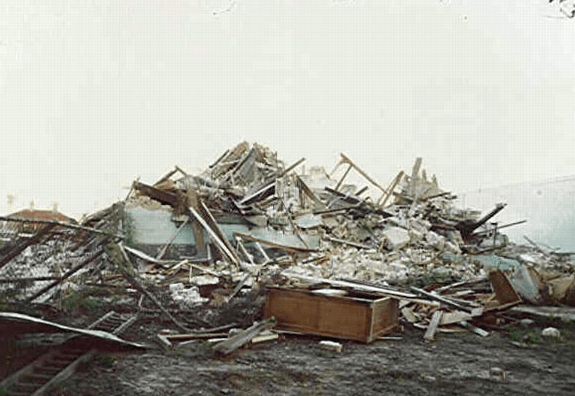
Photo: Inner West Council Library and History Services
After a Town Hall meeting, Planning Minister Bob Carr (later state premier) walked the streets of Marrickville and Petersham, noting a number of 19th century homes and demanded Marrickville Council put in place an environmental protection plan with protective measures for other buildings. Twenty-eight homes received non-demolition orders.
Brockleigh’s destruction may have been a matter of bad timing. Had it been able to hold on for another 30 years, it would have seen a greater pool of buyers wanting to settle in Marrickville and also prepared to restore it to its former glory. Or it may have been repurposed as a beautiful commercial space. Or perhaps re-used as affordable housing units. With so many options for sustainable redevelopment, it was a tragic loss of heritage in a suburb with an enviable built environment.
Gabby Richards
Gabby is an MHS member who has her own website dedicated to Marrickville’s built heritage. The site, Marrickville Unearthed, is dedicated to buildings that exist but face threats to their continued existence.
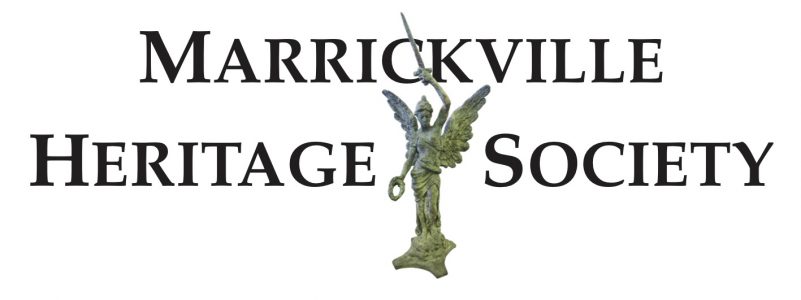
Wow Gabby, what a great article! Thanks for letting MHS share it! Scott
LikeLike
Thank you. I didn’t realise when we were doing the Illawarra Road tour that those houses on the western side belonged to five brothers and sisters.
LikeLike